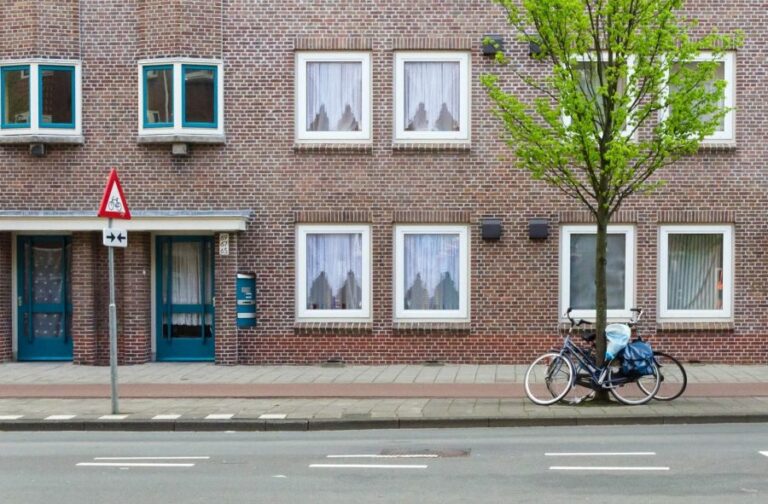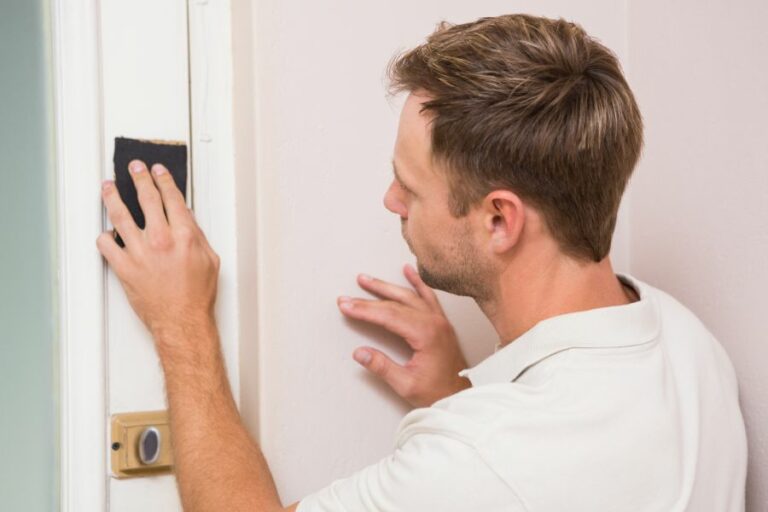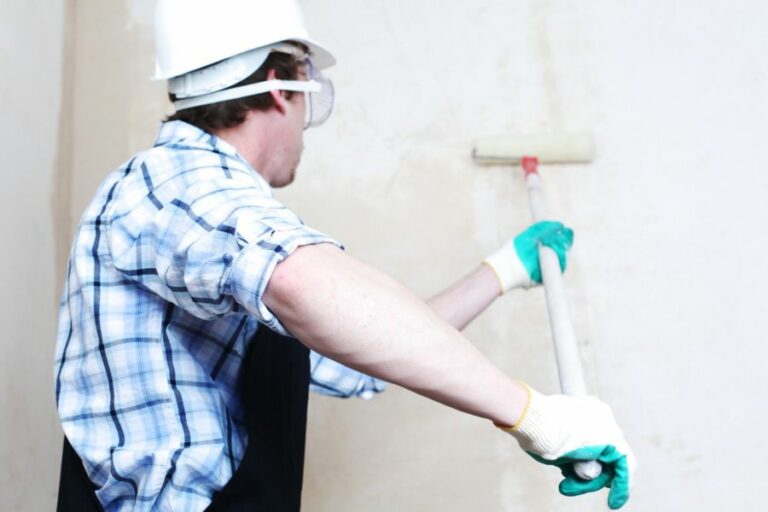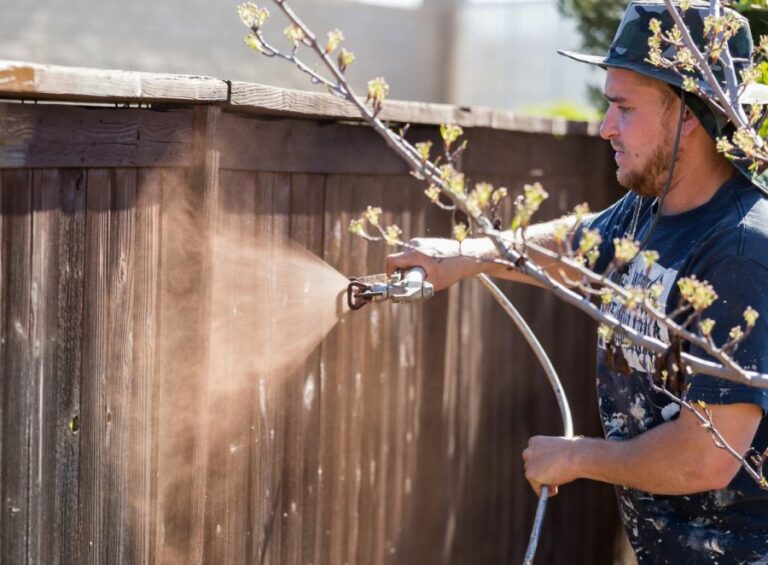Handling Efflorescence On Masonry Surfaces Prior To Painting
Efflorescence on masonry surfaces can be quite the challenge, but fear not, as we got you covered! Tackling this issue before painting is essential to ensure a smooth, long-lasting finish. Today, let’s dive into the various methods to effectively address efflorescence on your masonry surfaces, making them well-prepared for a fresh coat of paint.
Handling efflorescence on masonry surfaces prior to painting:
To manage efflorescence on masonry surfaces before painting, identify and address underlying causes such as water infiltration, high humidity, poorly graded materials, and inadequate drainage. Remove existing efflorescence deposits by dry brushing, washing, or chemical cleaning. Repair damaged masonry using tuckpointing and sealing. Choose appropriate paints like masonry primer, elastomeric paint, or breathable paint for long-lasting adhesion and efflorescence resistance. Consult a professional for the best results.

Efflorescence can be frustrating for homeowners when preparing masonry surfaces for painting. Read on to explore methods for removing efflorescence, preventing its return, and ensuring a smooth and long-lasting paint job. Keep going to unveil expert tips and tricks!
Contents
- 1 Managing Efflorescence on Masonry Before Painting
- 2 Precautions to Take When Dealing with Efflorescence
- 3 Is Efflorescence Removable by Brushing?
- 4 Top Paint Choices to Prevent Efflorescence
- 5 Efflorescence Removal Techniques for Masonry
- 6 The Importance of Removing Efflorescence
Managing Efflorescence on Masonry Before Painting
• Understanding Efflorescence
Efflorescence is a common problem affecting masonry surfaces such as brick, concrete, and stone. It occurs when water-soluble salts present in the masonry materials or the soil come in contact with moisture and migrate toward the surface.
As the water evaporates, the salts are left behind, forming a white, crystalline deposit on the masonry surface. These deposits can reduce the adhesion of paint, causing it to peel, blister, or discolor.
• Identifying the Causes of Efflorescence
To effectively handle efflorescence on masonry surfaces prior to painting, it’s crucial to identify and address the underlying causes. Some common factors contributing to efflorescence include:
- Water infiltration: Penetration of water into the masonry through cracks, joints, or gaps can lead to efflorescence.
- High humidity: Masonry surfaces in areas with high humidity levels might be more susceptible to efflorescence due to the increased potential for the salts to dissolve in water and migrate to the surface.
- Poorly graded masonry materials: The use of poorly graded or ungraded aggregates in masonry can increase the likelihood of efflorescence as they can contain higher amounts of water-soluble salts.
- Lack of proper drainage: A masonry surface needs proper drainage systems to prevent water accumulation. These may include correctly installed gutters, downspouts, and a sloped ground surface for water to flow away from the structure.
• Preparing the Masonry Surface
– Removing Existing Efflorescence
Before painting a masonry surface, it’s essential to remove any existing efflorescence deposits. Failure to do so can result in poor paint adhesion and a shorter lifespan of the paint job. Here are some methods to remove efflorescence effectively:
- Dry brushing: Use a stiff-bristled brush to remove efflorescence deposits gently. Be careful not to damage the masonry surface while brushing.
- Washing: Rinse the masonry surface with clean water using a hose or pressure washer. Avoid using high-pressure settings to prevent damaging the surface.
- Chemical cleaning: If the efflorescence is persistent, a diluted muriatic acid solution (approximately 10% acid) can be used. Always follow the manufacturer’s instructions for the proper use of acid-based cleaners.
– Repairing Masonry Surfaces
After removing the efflorescence, inspect the masonry surface for any damage, such as cracks, crumbling mortar, or loose bricks. Repair any damaged areas to ensure a stable surface for painting. Some methods to repair masonry surfaces include:
- Tuckpointing: Remove any loose or damaged mortar and replace it with new mortar. Ensure the new mortar color matches the existing mortar for a uniform appearance.
- Sealing: Apply a high-quality masonry sealer to any cracks, gaps, or joints present in the masonry surface. This step can help prevent water infiltration and efflorescence formation.
- Curing: Allow the repaired masonry surface to cure for the recommended period as specified by the mortar or sealer manufacturer before proceeding with painting.
• Selecting the Right Paint
Choosing the appropriate paint for masonry surfaces is crucial to ensure long-lasting adhesion and resistance to efflorescence. Some recommended types of paint include:
- Masonry primer: Applying a masonry primer specifically designed for efflorescence resistance can create a strong bond between the paint and the masonry surface. These primers can penetrate the surface and help seal it against moisture.
- Elastomeric paint: Elastomeric paints are highly flexible and can bridge small cracks in masonry surfaces, preventing water infiltration.
- Breathable paint: Using breathable paint allows residual moisture present in the masonry to evaporate while preventing water infiltration, reducing the potential for efflorescence formation.
• Professional Advice and Proper Application
To ensure the most effective efflorescence resistance and a durable, long-lasting paint job, consult with a masonry professional or paint specialist for guidance on the best products and methods for your specific project.
Follow all manufacturer instructions and recommendations for the chosen paint products’ preparation, application, and drying times.
By understanding the causes of efflorescence, preparing the masonry surface thoroughly, selecting the right paint, and following professional guidance, you can achieve a successful and long-lasting paint job on your masonry surfaces.
Precautions to Take When Dealing with Efflorescence
Efflorescence is a common problem in many buildings, causing unsightly white deposits and potential structural damage. Understanding what it is and, more importantly, how to prevent and treat it is of vital importance to property owners and construction professionals.
• Understanding Efflorescence: Causes and Effects
Before we delve into the precautions for efflorescence, it’s important to understand what causes this phenomenon.
Efflorescence occurs when water-soluble salts present in building materials, like concrete, bricks, and mortar, are dissolved by water and subsequently carried to the surface. When the water evaporates, the salts are left behind as a white, powdery deposit.
Apart from being unsightly, efflorescence can lead to other, more severe issues, such as:
- Corrosion of metal elements in the structure
- Deterioration of the building materials due to the salt deposits
- Discoloration or staining of surfaces
- Compromised structural integrity as a result of prolonged water exposure and chemical reactions
With the potential hazards posed by efflorescence, taking proper precautions is essential for protecting your property.
• Choosing the Right Building Materials
One of the most effective ways to prevent efflorescence is to select building materials that are less prone to the issue. Here are some tips for making the right choices:
– Opt for Low-Absorption Bricks
Bricks with low water absorption rates are less likely to exhibit efflorescence. This is because the lower the absorption rate, the less water can penetrate the brick and dissolve the salts.
– Use High-Quality Cement and Mortar
Cement and mortar of higher quality tend to contain fewer soluble salts, reducing the risk of efflorescence. When selecting a cement or mortar, be sure to check the manufacturer’s specifications for information on its content and performance.
– Consider Water-Repellent Additives
Using concrete or mortar mixtures that contain specialized water-repellent additives can help prevent water ingress and consequently reduce the risk of efflorescence. These additives don’t affect the overall performance of the cement or mortar but provide added protection against water penetration.
• Construction Best Practices
In addition to selecting suitable building materials, following construction best practices can minimize the occurrence of efflorescence. Some key recommendations include:
– Ensure Proper Grading
Grading the ground around your building is crucial in preventing water from pooling around your property, which can lead to efflorescence. Proper grading ensures that water drains away from the foundation and exterior walls, reducing the chance of soluble salts migrating to the surface.
– Install Effective Drainage Systems
Having a well-designed and properly installed drainage system can help prevent water from penetrating your building’s exterior, thereby preventing efflorescence. Be sure to consult with a drainage professional to ensure the appropriate system is in place for your property.
– Cure Concrete Correctly
The proper curing of concrete is vital in preventing efflorescence. This involves a slow and well-controlled process to allow the concrete to set and strengthen, usually achieved through methods like water misting or the use of curing agents.
• Preventative Efflorescence Treatments
In some cases, preventative measures such as sealers or coatings can be applied to surfaces that are at risk of efflorescence. These treatments work by either limiting the absorption of water, encapsulating the salts, or promoting the evaporation of water before the salts reach the surface.
It’s important to consider the specific needs and conditions of your building when selecting a preventative treatment. Consulting with a professional is a good starting point in this process.
• Managing Efflorescence: Prompt Identification and Treatment
If efflorescence does occur in your building, addressing the problem as soon as possible is crucial. Early identification and intervention can prevent further damage and reduce the need for more extensive repairs.
– Identifying Efflorescence
Efflorescence can be recognized by the distinctive white, powdery deposits that form on surfaces such as brick or concrete. If you spot these telltale signs of efflorescence, it’s important to take action to resolve the problem.
– Treating Efflorescence
Initial treatment of efflorescence typically involves cleaning the affected surfaces using specialized cleaning agents or techniques like power washing.
However, it’s imperative to also address the underlying causes of the efflorescence, be it water ingress, inadequate drainage, or a lack of proper maintenance to prevent it from reoccurring in the future.
• Final Thoughts
Taking the necessary precautions for efflorescence can save you significant time, money, and frustration.
By choosing the right building materials, adhering to construction best practices, and acting swiftly when signs of efflorescence appear, you can effectively protect your property and maintain its structural integrity and appearance.
For more information on efflorescence and recommendations on best practices, consult resources from reputable organizations such as the PCA Education Foundation, which provides valuable information on concrete technology and construction practices.
Is Efflorescence Removable by Brushing?
Efflorescence is an issue that affects various building materials, particularly those with porous surfaces such as bricks, concrete, or stone.
• What Causes Efflorescence?
Efflorescence occurs when water-soluble salts are brought to the surface of porous building materials by moisture.
The water evaporates, leaving behind a white, powdery residue consisting of these salts. Common sources of moisture that lead to efflorescence include:
- Groundwater infiltration
- Leaking pipes
- Poorly designed buildings
- High levels of humidity
While efflorescence is not structurally harmful, it can be aesthetically displeasing and may lead to the deterioration of building materials over time.
• Can You Brush Off Efflorescence?
In certain scenarios, light efflorescence can be removed by simply brushing it off with a stiff-bristled brush. However, removing efflorescence by brushing should be done carefully to avoid damaging the masonry or other porous surfaces.
Before attempting to brush off efflorescence, it is important to first identify the source of the moisture and address it. Otherwise, efflorescence will likely reappear.
– Using Chemical Cleaners for Efflorescence Removal
In more severe cases, where brushing off efflorescence proves to be ineffective, chemical cleaners can be used. A widely recommended solution for removing efflorescence is a diluted mixture of muriatic acid (hydrochloric acid) or a commercially available efflorescence remover.
It is important to closely follow the manufacturer’s instructions when using chemical cleaners, as improper use can damage the surface materials or pose safety hazards.
– Alternative Methods for Removing Efflorescence
In addition to brushing and chemical cleaners, other techniques, such as abrasive blasting or pressure washing, can be used to remove efflorescence from masonry surfaces. However, these methods should be used with caution, as they can potentially damage the materials.
• How to Prevent Efflorescence
Addressing the root causes of efflorescence can help prevent its recurrence. The following measures can be taken to limit the effects of efflorescence:
– Proper Drainage and Waterproofing Systems
Ensuring that the building has proper drainage and waterproofing systems in place can help prevent the buildup of moisture that leads to efflorescence.
For exterior applications, make sure gutters and downspouts are properly installed and maintained. In addition, consider applying a water-repellent surface treatment to exterior masonry surfaces.
For interior applications, using a quality moisture barrier between the masonry and interior finishes can limit the amount of moisture that comes into contact with the masonry.
– Use Low-Solubility Mortar and Grout
Masonry materials that have a low solubility can help reduce the amount of salt available for efflorescence. Choosing mortar and grout with a low water-to-cement ratio can also help mitigate efflorescence.
– Proper Ventilation
Good ventilation can help reduce indoor humidity levels and limit the amount of moisture available to cause efflorescence.
• Conclusion
While brushing off efflorescence is a viable option in some cases, it is essential first to address the underlying causes of efflorescence to prevent its recurrence. Implementing proper drainage, waterproofing, and ventilation systems, as well as using low-solubility building materials, can help limit the effects of efflorescence on building surfaces.
For further information on efflorescence and its prevention, refer to the Portland Cement Association’s Efflorescence: Causes and Prevention document, which offers in-depth guidance on this topic.
Method | Effectiveness |
|---|---|
Dry brush | May remove some efflorescence, but not always effective in removing all deposits |
Stiff bristle brush | Can be more effective in removing efflorescence, but may require greater effort and time |
Chemical treatment | May be necessary if brushing alone does not remove efflorescence, but proper precautions must be taken |
Preventative measures | Reducing moisture intrusion can help prevent efflorescence from forming or recurring |
Top Paint Choices to Prevent Efflorescence
Efflorescence is a common problem faced by homeowners, contractors, and architects alike. It occurs when the salts present in the building materials, such as concrete, bricks, and mortars, dissolve in water and migrate to the surface.
Once the water evaporates, a white, powdery substance remains, detracting from the appearance and integrity of your building.
• Understanding Efflorescence
Before diving into the different types of paint to stop efflorescence, it’s essential to understand the cause of this phenomenon. Efflorescence occurs when:
- There are water-soluble salts present in the building materials.
- Water penetrates the material and dissolves these salts.
- The salt-laden water migrates to the surface, and the water evaporates, leaving the salts behind.
To stop efflorescence effectively, a paint must possess specific qualities, such as:
- Permeability to water vapor to allow trapped moisture to escape.
- Resistance to alkalis and salts to prevent further migration.
- Excellent adhesion to the substrate to provide a long-lasting barrier.
• The Top Choice: Elastomeric Paint
Elastomeric paint is often considered the best paint to stop efflorescence. This versatile, water-based paint has several benefits that make it an ideal choice for combating efflorescence:
– Durability
Elastomeric paint is designed to last for an extended period, with some products offering warranties for 10 or more years. Its durability results from its ability to expand and contract with temperature fluctuations, preventing cracking and peeling.
– Water-Resistant Barrier
One of the essential qualities of paint that prevents efflorescence is its capacity to repel water. Elastomeric paint creates a water-resistant barrier on the surface, hindering water infiltration and salt migration.
Moreover, it allows trapped moisture inside the walls to evaporate, preventing efflorescence from occurring beneath the paint film.
– Alkali and Salt Resistance
Elastomeric paint is designed to resist mineral salts and alkalis, which ensures that it can adequately protect your building from efflorescence. Furthermore, it can resist the harsh conditions in which efflorescence can thrive, maintaining its integrity and preventing recurrence.
– Adhesion to Multiple Surfaces
Elastomeric paint adheres well to various substrates such as concrete, brick, and stucco. This adhesion is crucial in preventing efflorescence, as it ensures a systematic and secure barrier against moisture and salt penetration.
• Additional Tips to Stop Efflorescence
While choosing the right paint plays an essential role in stopping efflorescence, other measures can also help in preventing this issue:
– Eliminate Water Sources
Identify and eliminate any sources of water infiltration, such as leaks in roofs or plumbing systems. Repair any damaged gutters, downspouts, or flashing to prevent water accumulation near your building.
– Apply a Waterproofing Membrane
Before painting your building, consider applying a waterproofing membrane to the exterior surface. This membrane serves as an additional barrier against water infiltration and further reduces the risk of efflorescence.
– Ensure Proper Ventilation
Trapped moisture inside your building can contribute to efflorescence. Ensure proper ventilation, especially in areas prone to moisture retention, such as bathrooms and kitchens. Installing exhaust fans or vents can be a practical solution.
In conclusion, elastomeric paint is an excellent choice to stop efflorescence in its tracks. Its durability, water resistance, alkali resistance, and adhesion capabilities make it an ideal solution for protecting your building.
Remember to take additional precautions like eliminating water sources, applying a waterproofing membrane, and ensuring proper ventilation for the best results.
Paint Type | Description | Benefits |
|---|---|---|
Acrylic Paints | Water-based paint, made from acrylic resins, that’s durable and resistant to efflorescence. | |
Silicate Paints | Mineral-based paint that bonds with the surface and is highly vapor permeable | |
High-Quality Latex Paints | Water-based paint, made from synthetic polymers, that provides good adherence and durability. |
Efflorescence Removal Techniques for Masonry
Efflorescence is a common issue that affects various types of masonry construction, including brick, concrete, and stonework.
• Understanding Efflorescence
Efflorescence occurs when soluble salts present in masonry and the surrounding environment migrate to the surface due to water evaporation. These salts crystallize and form a white, powdery substance that can be unsightly and potentially damaging if not promptly addressed.
• Preventative Measures
Before discussing how to remove efflorescence from masonry, it is essential to understand the potential ways to prevent or minimize its occurrence. Some of the common preventative measures include:
- Proper Material Selection: Use low-absorption bricks and mortar with a lower concentration of soluble salts.
- Adequate Drainage: Ensure that the masonry has appropriate drainage channels to prevent water buildup and capillary action.
- Moisture Management: Install moisture barriers, such as damp-proof courses and vapor retarders, to reduce the amount of water entering the masonry.
- Sealing Masonry: Apply a breathable masonry sealer that allows trapped water to evaporate while preventing the entry of surface water.
• Essential Tools for Efflorescence Removal
To remove efflorescence from masonry effectively, you will need the following tools:
- Stiff-bristled brush
- Bucket with clean water
- Soft cloth or sponge
- Protective gloves and eyewear
- Mild detergent or efflorescence remover
- Pressure washer (optional)
• Removing Efflorescence: Step-by-Step Guide
– Step 1: Dry Brushing
The first step in removing efflorescence from masonry is to dry brush the affected areas. This process helps eliminate the loose salts present on the surface, making it easier to control and remove them.
- Begin by protecting yourself with gloves and safety goggles.
- Using a stiff-bristled brush, scrub the masonry surface gently but firmly in a circular motion to dislodge the efflorescence.
- Make sure to change directions periodically to ensure efficient removal.
- Dispose of the dislodged efflorescence safely and avoid inhaling the fine particles.
– Step 2: Washing with Water
After brushing, the next step is to wash the masonry surface with clean water. This step helps remove any remaining efflorescence and prevents it from re-crystallizing on the surface.
- Fill a bucket with clean, warm water.
- Dip a soft cloth or sponge into the water and wring out the excess before applying it to the surface.
- Gently wipe the masonry surface, rinsing the cloth frequently to avoid spreading the salts.
- If using a pressure washer, maintain a low-pressure setting and a safe distance from the masonry to prevent damage.
– Step 3: Applying a Cleaning Solution
If the efflorescence persists after the first two steps, it is necessary to use a suitable cleaning solution.
- Choose a mild detergent or commercially available efflorescence remover compatible with your specific masonry material.
- Follow the manufacturer’s instructions to prepare the solution, taking care to wear protective gear.
- Apply the solution to the affected areas, allowing it to react with the efflorescence as instructed by the manufacturer.
- Use a soft-bristled brush to scrub the surface gently, avoiding aggressive movements that may damage the masonry.
– Step 4: Rinsing and Drying
Once the cleaning solution has had time to work, the final step is to rinse the masonry surface thoroughly and allow it to dry.
- Rinse the surface with clean, warm water, ensuring that all traces of the cleaning solution are removed.
- If using a pressure washer, maintain a low-pressure setting and a safe distance from the masonry.
- Allow the masonry to dry completely, as residual moisture may cause the efflorescence to reappear.
- Inspect the surface for any remaining efflorescence and repeat the process if necessary.
• Conclusion
In conclusion, removing efflorescence from masonry requires a combination of mechanical and chemical methods, as well as adequate care and preparation to prevent potential damage to the building material.
By following the steps outlined in this article, you can effectively restore your masonry’s appearance and protect it from future efflorescence occurrences. For further guidance on masonry preservation, consult resources from reputable institutions like the National Park Service.
Step | Description |
|---|---|
1 | Wait for the masonry to dry completely before attempting to remove efflorescence. |
2 | Use a stiff-bristled brush or broom to gently scrub away any loose efflorescence from the surface of the masonry. |
3 | For more stubborn efflorescence, use a mild, diluted muriatic acid solution (approximately 10 parts water to 1 part muriatic acid) to clean the surface. Always follow the manufacturer’s instructions for mixing and use of muriatic acid. |
4 | Apply the muriatic acid solution to the affected masonry using a sponge or bristle brush, starting from the bottom and working upwards. Never apply an acidic solution directly to dry masonry, as this can also damage the masonry surface. |
5 | Allow the acid solution to sit on the surface for a few minutes, and then scrub the area gently with a stiff-bristled brush. |
6 | Rinse the treated area thoroughly with water, making sure to neutralize the acid and remove any remaining efflorescence. Use a pressure washer if necessary, but avoid using high pressure, as this can damage the masonry. |
7 | After the masonry has dried, apply a high-quality, breathable masonry sealer to help prevent future efflorescence formation. |
The Importance of Removing Efflorescence
Understanding the importance of efflorescence removal and how to address it properly is crucial for maintaining the structure and appearance of various surfaces.
• What is Efflorescence?
Efflorescence is a crystalline deposit, typically white or grey in color, that appears on the surface of porous materials such as concrete, brick, and stonework. It occurs when water-soluble salts, primarily calcium, and sodium, are brought to the surface by moisture and evaporate, leaving the salts behind.
Efflorescence is not only an aesthetic issue, but it can also indicate underlying structural problems. For instance, if salts and moisture are present within the material, it could suggest that the surface is not sealed or waterproofed correctly, leading to potential further damage.
• The Long-Term Effects of Efflorescence
If not removed, efflorescence can lead to various long-term effects on surfaces and structures, including:
- Discoloration and staining: The crystalline deposits can cause permanent staining on the surface, diminishing the aesthetic appeal of the structure or material.
- Deterioration of surfaces: The salts that efflorescence is composed of can react with other materials on the surface, such as cement or mortar. This reaction can weaken these materials over time, leading to cracks and structural instability.
- Increased porosity: As the salts accumulate on the surface, they can make the material more porous. This, in turn, allows more moisture to penetrate the material, exacerbating the problem and leading to further damage.
Considering the potential long-term consequences of not removing efflorescence, it’s essential to address the issue as soon as it’s identified.
• Proper Efflorescence Removal Techniques
There are several methods for removing efflorescence, depending on the type of material, location, and severity of the deposit. Some of the most common techniques include:
- Dry brushing: For light deposits with a powdery consistency, dry brushing the surface with a stiff-bristle brush can help loosen and remove efflorescence.
- Water rinsing: In some cases, rinsing the surface with water and scrubbing with a brush can help dissolve and remove soluble salts.
- Chemical cleaners: For more persistent efflorescence deposits, a specialized efflorescence cleaner can be used. These cleaners often contain mild acids that help break down the mineral deposits. Always follow the manufacturer’s instructions for proper use and safety precautions.
- Professional pressure washing: In some cases, particularly for larger or more severe deposits, hiring a professional pressure washing service can provide the necessary power and expertise to remove efflorescence effectively.
Before undertaking any efflorescence removal efforts, it’s important to consult an expert, such as a building material supplier or a professional contractor, if you are unsure of the appropriate method for your specific situation.
Additionally, the U.S. General Services Administration offers useful guidelines on the proper maintenance and restoration of historic masonry structures, which includes recommendations on efflorescence removal methods.
• Preventing Efflorescence in the Future
To prevent the reoccurrence of efflorescence, consider implementing the following measures:
- Proper drainage and waterproofing: Ensuring that water drains away from surfaces and structures, as well as sealing cracks and applying appropriate waterproofing agents, can help minimize the presence of moisture and salts within materials.
- Use of moisture-resistant materials: Opting for materials that are less porous and more resistant to moisture penetration can reduce the likelihood of efflorescence forming.
- Regular maintenance: Inspecting surfaces for signs of efflorescence and addressing any issues early can help prevent the growth and spread of mineral deposits.
In conclusion, removing efflorescence is important not only for maintaining the appearance of surfaces and structures but also for preventing long-term damage related to the salts and moisture present in the material.
By employing proper removal techniques and taking steps to prevent efflorescence in the future, you can help preserve the integrity and appearance of your surfaces.







